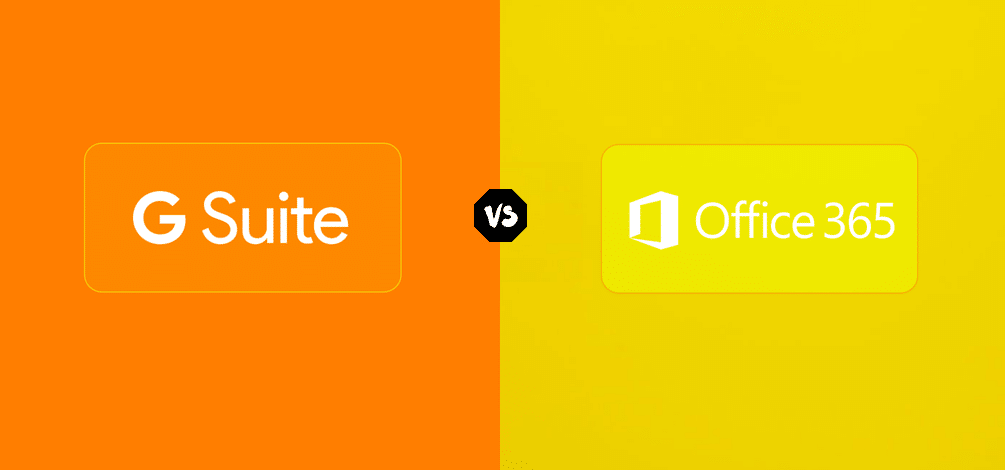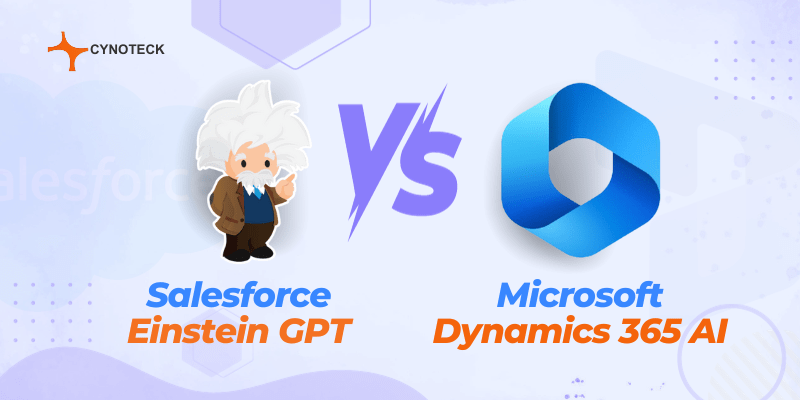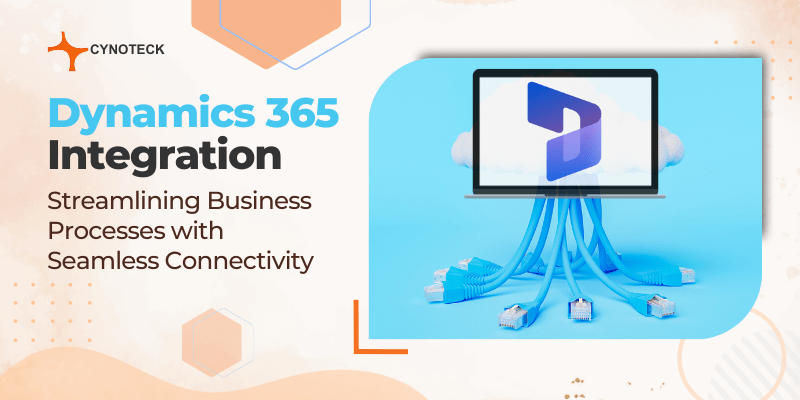In the digital landscape, Google G Suite and Microsoft Office 365 stand as prominent productivity suites, each offering a suite of applications designed to enhance collaboration and streamline work processes. Google G Suite, developed by Google, encompasses tools like Gmail, Google Docs, Sheets, and Slides.
Microsoft Office 365, crafted by Microsoft, includes applications such as Outlook, Word, Excel, and PowerPoint. These suites have become integral to the way businesses operate, providing a digital ecosystem for communication, document creation, and collaboration.
In the fast-paced realm of modern business, the significance of productivity suites cannot be overstated. These suites serve as the backbone of organizational efficiency, fostering seamless communication, collaboration, and information management. With features tailored to enhance productivity, businesses rely on suites like Google G Suite and Microsoft Office 365 to empower their teams, streamline workflows, and adapt to the ever-evolving demands of the digital age.
The purpose of comparing Google G Suite and Microsoft Office 365 is rooted in the need for businesses to make informed decisions about their digital toolkit. Understanding the nuances of each suite enables organizations to align their choice with their unique requirements and preferences.
This comparison aims to provide a comprehensive overview, enabling businesses to navigate the features, strengths, and considerations of both suites, ultimately aiding them in selecting the productivity solution that best fits their operational needs.
I. Collaboration Features
A. Document Collaboration
- Real-Time Editing and Commenting
Both Google G Suite and Microsoft Office 365 excel in facilitating real-time collaboration on documents. With features like simultaneous editing, multiple team members can work on a document concurrently.
This real-time capability enhances efficiency, allowing teams to contribute and iterate seamlessly.
Additionally, robust commenting features enable users to provide feedback directly within the document, fostering a collaborative and iterative approach to content creation.
- Version Control
Effective version control is a cornerstone of document collaboration, ensuring that teams work on the latest iteration of a file.
Google G Suite and Microsoft Office 365 address this need by offering version history and tracking features. Users can easily review changes, revert to previous versions, and track the evolution of a document over time. This capability promotes transparency and minimizes the risk of errors in collaborative projects.
B. Communication Tools
Email remains a fundamental communication tool in the business landscape, and both Google G Suite and Microsoft Office 365 offer robust email solutions. Gmail, part of Google G Suite, boasts a user-friendly interface, powerful search capabilities, and effective spam filtering.
On the other hand, Outlook, within Microsoft Office 365, provides a feature-rich email client with seamless integration across other Office applications, ensuring a comprehensive communication experience.
- Chat and Messaging
In the realm of chat and messaging, both suites provide intuitive platforms to facilitate quick and efficient communication. Google G Suite leverages tools like Hangouts Chat, allowing users to engage in threaded conversations and collaborate in real-time.
Microsoft Office 365, through Microsoft Teams, offers a centralized hub for chat, file sharing, and collaboration, enhancing team communication and productivity.
- Video Conferencing
Video conferencing has become a cornerstone of modern business communication, and both Google G Suite and Microsoft Office 365 recognize its importance. Google Meet, integrated into G Suite, provides a platform for virtual meetings, webinars, and collaborative discussions.
Similarly, Microsoft Teams offers robust video conferencing capabilities, enabling teams to connect seamlessly, regardless of geographical locations, fostering a sense of virtual presence and collaboration.
II. Productivity Applications
A. Google G Suite
- Gmail
Gmail, a cornerstone of Google G Suite, is a robust and user-friendly email platform. With an intuitive interface and powerful features, Gmail offers efficient email management, smart categorization, and seamless integration with other G Suite applications.
Its simplicity and effectiveness make it a preferred choice for users seeking a reliable email solution within the G Suite ecosystem.
- Google Docs, Sheets, and Slides
Google G Suite’s document creation trio—Docs, Sheets, and Slides—brings collaborative content creation to the forefront. Google Docs allows teams to collaboratively edit text documents in real-time, while Sheets facilitates shared spreadsheet creation, and Slides streamlines collaborative presentation building.
These cloud-based applications promote teamwork, ensuring that edits and changes are instantly visible to all collaborators.
- Google Drive
Google Drive serves as the centralized hub for storing and sharing documents within the G Suite environment. Offering ample cloud storage, Google Drive allows users to access their files from any device, fostering seamless collaboration.
The integration of Google Drive with other G Suite applications simplifies file sharing, version control, and collaborative editing, contributing to a cohesive and efficient workflow.
B. Microsoft Office 365
- Outlook
Outlook, a key component of Microsoft Office 365, is a comprehensive email and calendar application. Known for its robust features, Outlook provides advanced email organization, scheduling capabilities, and seamless integration with other Office 365 applications.
Its user-friendly interface and powerful functionalities make it a reliable choice for managing communication and appointments within the Microsoft ecosystem.
- Word, Excel, and PowerPoint
Microsoft Office 365 includes the iconic trio of productivity applications—Word, Excel, and PowerPoint. These applications are synonymous with document processing, spreadsheet creation, and presentation design, respectively.
Known for their feature-rich interfaces and versatile functionalities, Word, Excel, and PowerPoint empower users to create polished and professional documents, spreadsheets, and presentations.
- OneDrive
OneDrive, Microsoft’s cloud storage solution integrated into Office 365, provides users with a secure and accessible platform for storing and sharing files.
With seamless integration with other Office applications, OneDrive simplifies collaboration by ensuring that files are readily available across devices.
Its robust security features and version control contribute to a secure and efficient file management system.
Also, read: What’s New in the 2021 Release Wave 1 for Dynamics 365 for Sales
III. Pricing and Subscription Models
Pricing is a factor that can help you decide which one to choose between the two suites. If you have gone through the characteristics of both suites, you can come back to this part immediately without been concerned with the rest of the article.
The mode of subscription both offers is a per-user-per-month subscription. Also, Microsoft offers an annual payment option with a discount.
A. Google G Suite Pricing Plans
Google G Suite offers a straightforward pricing structure tailored to meet the diverse needs of businesses. The plans are designed with scalability in mind, providing flexibility for organizations of varying sizes.
Google suite is packaged in three versions which are Basic, Enterprise and business. The basic package comes with 30GB storage and full suite application at $6 per user month. (For nonprofit purpose, they can use G suite basic for free).
The business plan at $12 monthly includes all the basic packages, plus archiving and unlimited storage, additional administrative tools, enterprise search capabilities, and low-code application environment. The last package includes all that the business version offers more administrative controls at $25 per month.
| Basic | Business | Enterprise | |
| Price | $6/user/mo. | $12/user/mo. | $25/user/mo. |
| Create documents, spreadsheets and presentations | Yes | Yes | Yes |
| Mobile versions1 of Docs, Sheets, Slides, Gmail | Yes | Yes | Yes |
| Email, custom domains, shared calendars, videoconferencing, team messaging | Yes | Yes | Yes |
| Drive file storage | 30GB/user | Unlimited (if < 5 users, 1TB per person) | Unlimited (1TB per person if < 5 users) |
| Additional business tools | Forms, Currents, Sites, Keep, | App Maker, Forms, Keep, Currents, Sites | Forms, Keep, Currents, App Maker, Sites |
| Security and management tools | fundamental tools including mobile device management, security alerts and SSO | The Basic plan including more powerful tools like retention policies, archive and eDiscovery | The Business plan with powerful tools including, hosted S/MIME for Gmail, data loss prevention and access control with security key enforcement |
| 1 All mobile apps available for Android and iOS |
B. Microsoft Office 365 Pricing Plans
Microsoft Office 365 follows a tiered pricing model, offering a range of plans to accommodate different user and business requirements. The subscription for office 365 is more complicated. They range from Basic at $5 per month to $35 monthly for office 365 E5, the full packaged version for the enterprise.
The table below describes what you get with each version. The plans on the left are for small businesses that have up to 300 employees while the plans on the right are for larger organizations.
| Office 365 Business Essentials | Office 365 Business | Office 365 Business Premium | Office 365 ProPlus | Office 365 E1 | Office 365 E3 | Office 365 E5 | |
| Pricing | $5/month | $8.25/month | $12.50 /month | $12/month | $8/month | $20month | $35/month |
| User limit | 300 users | 300 users | 300 users | Unlimited | Unlimited | Unlimited | Unlimited |
| Create documents, spreadsheets and presentations | Yes | Yes | Yes | Yes | Yes | Yes | Yes |
| Desktop1 / mobile2 versions of Excel, Word, PowerPoint, Outlook | No / Yes | Yes / Yes | Yes / Yes | Yes / Yes | No / Yes | Yes / Yes | Yes / Yes |
| Exchange email hosting, custom domains, shared calendars | Yes | No | Yes | No | Yes | Yes | Yes |
| Microsoft Teams, Skype for Business and SharePoint | Yes | No | Yes | Teams only | Yes | Yes | Yes |
| OneDrive file storage | 1TB/ user | 1TB /user | 1TB/user | 1TB/user | 1TB/user | Unlimited | Unlimited |
| Additional business tools | OneNote, Planner, Yammer, Delve, MyAnalytics (basic), more | Access3, Publisher3, OneNote, more | Access3, Publisher3, OneNote, Planner, Yammer, Delve, MyAnalytics (basic), more | Access3, Publisher3, OneNote | OneNote, Planner, Yammer, Delve, MyAnalytics (basic), Power Automate, more | Access3, Publisher3, OneNote, Planner, Yammer, Delve, MyAnalytics (basic), Power Automate, more | Access3, Publisher3, OneNote, Planner, Yammer, Delve, MyAnalytics (full), Power Automate, Power BI, more |
| Security and management tools | Basic tools including mobile device management, archiving, threat management and auditing | Basic tools (omits Exchange Online Protection) | Basic tools | Enterprise-level tools (omits Exchange Online Protection) | Everything in Business Premium plus more powerful tools including retention policies | Everything in E1 plus more powerful tools including data loss prevention and required 2-factor authentication | Everything in E3 plus more powerful tools including advanced threat protection and eDiscovery |
| 1 Outlook, Word, Excel and PowerPoint desktop apps available for Windows and Mac 2 All mobile apps available for Android and iOS 3 Publisher and Access desktop apps available for Windows only |
C. Comparison of Features Included in Different Plans
When comparing Google G Suite and Microsoft Office 365 pricing plans, it’s essential to consider the specific features offered at each tier. Google G Suite’s Basic plan provides a strong foundation for collaboration, while the Business and Enterprise plans introduce progressively advanced features, catering to larger organizations with heightened security and compliance requirements.
On the Microsoft Office 365 side, the tiered plans ensure that businesses can choose the level of functionality that aligns with their needs. The Basic, Standard, and Premium plans offer increasing levels of applications, services, and security features, enabling organizations to scale their subscription based on their operational demands.
In evaluating the features included in different plans, businesses should prioritize their specific requirements, considering factors such as the size of the organization, collaboration needs, and security considerations. The goal is to select a plan that not only fits the budget but also aligns seamlessly with the operational objectives of the business.
IV. Integration with Third-Party Apps
A. Compatibility with Other Business Applications
Both Google G Suite and Microsoft Office 365 recognize the importance of seamless integration with other business applications. Google G Suite, with its open API architecture, facilitates compatibility with a myriad of third-party apps.
This adaptability ensures that businesses can leverage their existing tools, integrating G Suite effortlessly into their workflow. Similarly, Microsoft Office 365, known for its extensive ecosystem, allows users to connect with a wide array of business applications, fostering a cohesive digital environment where productivity is paramount.
B. Customization Options
Customization is a key consideration for businesses aiming to tailor their productivity suites to meet specific needs. Google G Suite empowers users with customization options, allowing them to create tailored workflows and adapt applications to their preferences.
This flexibility ensures that G Suite aligns seamlessly with unique business processes. On the Microsoft Office 365 front, a wealth of customization features is available, enabling users to personalize their experience.
From templates to advanced settings, Office 365 provides the tools for users to shape their digital workspace according to their requirements.
C. Cross-Platform Functionality
In today’s diverse technological landscape, cross-platform functionality is imperative. Google G Suite, with its cloud-based nature, ensures accessibility across various devices and operating systems. Whether on a desktop, laptop, tablet, or smartphone, users can seamlessly access and collaborate on G Suite applications.
Microsoft Office 365 follows suit, offering a versatile experience across Windows, macOS, iOS, and Android platforms. This cross-platform compatibility enhances user flexibility, enabling them to work from anywhere, on any device.
The integration with third-party apps, customization options, and cross-platform functionality are pivotal aspects in the decision-making process for businesses choosing between Google G Suite and Microsoft Office 365.
The ability to seamlessly integrate with existing tools, adapt to unique workflows, and provide a consistent experience across devices ensures that these productivity suites become integral components of a modern, digitally agile workspace.
V. User Interface and Experience
A. Design and User-Friendliness of Google G Suite
Google G Suite prides itself on a clean and intuitive design, emphasizing user-friendliness. The interface is streamlined and easy to navigate, with a focus on simplicity.
The cohesive design across applications ensures a consistent user experience, making it straightforward for both new and experienced users to access features seamlessly.
With a minimalistic approach, G Suite prioritizes functionality without overwhelming users, contributing to an efficient and user-friendly environment.
B. Design and User-Friendliness of Microsoft Office 365
Microsoft Office 365, renowned for its familiarity, maintains a design that aligns with the classic Microsoft aesthetic. The interface carries a sense of continuity for users accustomed to traditional Office applications.
Navigating through Word, Excel, PowerPoint, and other tools is intuitive, providing a sense of comfort for users already accustomed to the Microsoft ecosystem. The design prioritizes accessibility, ensuring that users can effortlessly locate and utilize the extensive array of features within the applications.
In evaluating the user interface and experience of Google G Suite and Microsoft Office 365, the distinction lies in the design philosophies. Google G Suite champions a modern, minimalistic approach, while Microsoft Office 365 upholds a classic design that caters to users with a longstanding familiarity with Microsoft products.
The choice between the two often hinges on user preferences and the comfort level of the workforce with either design ethos. Both suites, however, aim to provide a user-friendly experience, acknowledging the importance of design in enhancing productivity and user satisfaction.
Conclusion
When businesses stand at the crossroads of choosing between Google G Suite and Microsoft Office 365, several considerations come into play. It’s essential to weigh the specific needs of the organization, the preferences of the workforce, and the desired level of customization.
Consider factors such as collaboration requirements, budget constraints, and the existing technological landscape. Assessing these aspects provides a foundation for making an informed decision that aligns with the unique dynamics of the business.
Above all, the key takeaway is the importance of aligning the choice of productivity suite with the specific needs of the business. There’s no one-size-fits-all solution.
Whether opting for the simplicity of Google G Suite or the familiarity of Microsoft Office 365, businesses should prioritize functionality that enhances collaboration, productivity, and efficiency.
The decision-making process should be driven by a clear understanding of the organization’s goals, ensuring that the chosen suite becomes an enabler rather than a constraint.
In the dynamic landscape of business technology, the choice between Google G Suite and Microsoft Office 365 is not just about features; it’s about finding the right fit that empowers teams and aligns seamlessly with the operational DNA of the organization.

Microsoft Dynamics 365 Consulting
Cynoteck Technology is a leading expert on Microsoft Dynamics 365 and we provide an array of Dynamics 365 Consulting Services to all size of businesses. Get in touch with us for latest updates on Dynamics 365.




